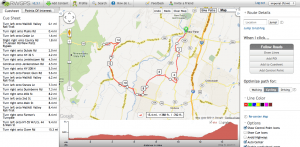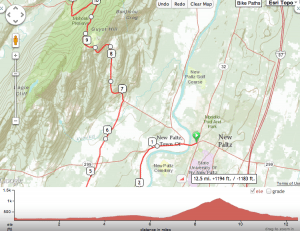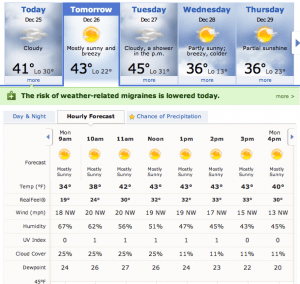
Route planning is something every cyclist eventually has to tackle. While the idea of just going out and riding whatever roads strike your fancy that day is exhilarating, sometimes planning a route may be a necessity. Maybe you have a few friends joining you, maybe you have a club ride to plan or maybe you have some training that you need to plan a route for. In any case, planning a good route is more than just putting (virtual) pen to paper, and we're going to explore how to ensure a good plan and a good route.
Ready, Set, GO!
If you're riding on your own for fun or fitness, your front door will often be your starting line. But if you're planning a route for a group, the starting location will take some consideration. In most cases, you'll be looking for a public spot that has sufficient access to roadways and parking for those who want to drive to the ride, otherwise you'll limit the people who are willing to show up. Few people want to drive a long way out of the way for a ride, so somewhere easily accessible is a necessity. This can be a park, stadium, shopping center or any other location that will handle the number of people on the ride. You may also want to consider any other amenities around the starting point such as public restrooms and cafes or coffee shops for pre and post ride use, as these are additional features that enhance the ride experience.
 From Sea to Sky
From Sea to Sky
Climbing adds fun and challenge to any ride. They give us a chance to test our legs against gravity and the other members of our riding group, but their number, difficulty and placement along the route are all important things to consider. While some people like to load up a route with a few dozen climbs, one thing to keep in mind is the ability of the group (if you're riding with a group) or your own ability and how well trained you are. If you're a beginner, not at a high level of fitness, your group is not adept in the mountains, or it is the wrong season to be climbing huge passes (think spring or fall) you may want to tone down the elevation gains. Keep the difficulty of your route's climbs in mind as well; not everyone can ride sustained 12% grades, and many people can not ride even short 20% grades (and they are out there.) If your group is not composed of six foot, 125 pound string bean skinny climbers, those “leg breakers” may be a disservice to riders who physically aren't fit enough for them.
On the subject of placement along the route, it's important to keep in mind that most people can't jump into a hill climb right out of the gate without a warmup. Few, if any, will show up to a group ride with a trainer and get in 20 minutes of warmup spinning before the group rolls out. It's a kind gesture to your own legs, as well as the entire group, to give some kind of warm up on flatter terrain, as well as throwing in a couple of smaller, easier climbs to get the blood flowing before you ascend into the clouds.
Surfaces and Scenery
Perhaps more important than the topography or amenities, the road surfaces and the scenery experienced during the ride will be some of the more memorable aspects. Plan to use roads that are in good condition with as few cracks or rough areas as possible, and notify the group of any spots that could be dangerous. If you're including dirt roads or other unpaved roads, be sure that everyone knows where and when they will occur (they can be nasty surprises to anyone who's not familiar with or ready to ride them.)
Scenery can be tough. There are so many varying things that people are tickled to see: some love animals, some love vistas, some simply enjoy random farmhouse architecture. In any case, planning your route to show off some of the local “hidden gems” can be a great way to entice people into joining your rides. Very often, you can combine the day's big climb with some beautiful scenery and the focal point of the ride.
 Don't Forget The Little Things
Don't Forget The Little Things
Planning a route of any significant distance (especially in the winter or summer months) should include a spot to take a short rest stop and refill bottles (or warm up/cool down a little as well.) Coffee shops, cafes, gas stations, convenience stores and even grocery stores can offer vital places to spend a few minutes of rest.
Weather is also a big consideration too. Generally looking at your forecast on a daily basis will give you a good idea of things like wind speed and (most importantly) direction. One of the most important nuances of route planning involves checking your wind speed and (again, most importantly) direction. There's nothing worse than planning a fantastic route with beautiful, smooth roads, a couple of well placed climbs with award winning vistas at the summits and a great mid ride break at a cafe only to have the ride dampened by having to fight a 20 MPH headwind on the way back to the parking lot. Keep an eye on your route and plan to adjust it to ensure that you're riding into a headwind for the first half of the ride, and riding back with a tailwind helping your tired legs propel you towards the finish. This may mean riding your route backwards if need be, so be ready to make adjustments on the fly.
So now that the important things are out of the way, get planning, get your buddies out there, and have a great ride.
Questions about planning or what makes a great route? Leave them below and start up the discussion.